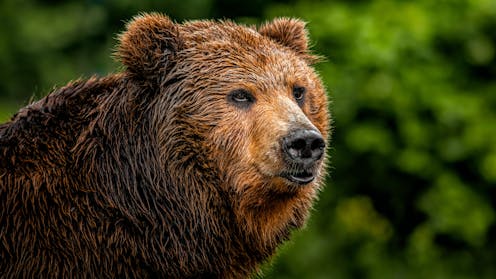
With her second novel Bear, Julia Phillips consolidates her position as a leading novelist of the cartographic margins.
Her first novel Disappearing Earth, a National Book Award finalist and one of the New York Times Book Review’s 10 best books of 2019, was set in Russia’s remote Kamchatka Peninsula; her second brings us to remote San Juan Island in the United States’ Pacific Northwest.
Review: Bear – Julia Phillips (Scribe)
Bear is a post-pandemic novel with a fairy tale twist. It begins as a story of the protagonist’s arrested development. At 29, Sam’s dreams have stalled. She lives with her older sister Elena, as they care for their incapacitated mother, a 51-year-old former nail technician, whose overexposure to solvents has caused her terminal lung cancer.
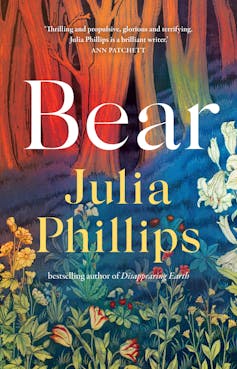
Sam serves confectionery on the San Juan ferry for a meagre 24 dollars an hour, a drop in the ocean when there are bills to pay. She was unemployed during the two years of COVID-19 lockdowns, which decimated the region’s crucial tourism industry. Dependent on Elena’s wages as a bartender at the local golf club, Sam and her family desperately need this second income.
Sam deeply resents serving the ultra-wealthy ecotourists and luxury holiday-home owners, who treat the island as their temporary playground and the local service staff as disposable “peasants”. Her reality is one of precarious labour, exorbitant medical bills and mortgage payments.
Economic hardship alienates the sisters from their surrounding, even though they live in one of the most sublime places on Earth. Sam has become disenchanted with an island she adored as a child: a wilderness of dramatic bluffs, humpback whales, deer, sea lions and bald eagles circling overhead.
Scarred from having been picked on for being poor by the island’s wealthy young inhabitants in her high school years, Sam shuns any chance of friendship and the possibility of romance with her would-be boyfriend Ben, a freer spirit from the mainland, who works on the ferry crew for the tourist season. She focuses instead on her plans to sell their house and move away from the island after their mother passes away.
These tensions come to a head when something unexpected, indeed mystical, arrives on their doorstep: a grizzly bear. Fleshy, fetid, furry, the bear is both real and unreal. Something extraordinary has brought the animal to this place. Black bears are occasionally spotted on San Juan Island, but the appearance grizzly bear is unprecedented. It is not simply a potential physical danger, but a manifestation of the forces that threaten to tear the sisters apart.
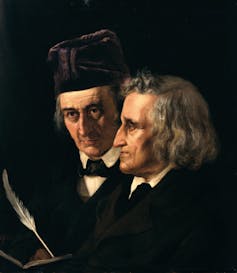
The grizzly alters the course of their lives. Elena and Sam make sense of its extraordinary appearance by interpreting it as a symbol. Both come to believe they are living in a fairy-tale lifted from the pages of the Brothers Grimm, though they read different meanings into the bear.
To Elena, the bear is a miracle. “What’s going on here is not dangerous,” she reasons. “It’s magical. It’s the best thing that has ever happened to us.” Her bear represents an inversion of everything their absent stepfather represented. As a parent, he was supposed to be their protector; instead, he proved abusive, vicious and violent. The bear, by contrast,
swam miles in the wet black night to arrive at their home. Made exception of itself, and of them, to every rule. It was supposed to be gruff but was instead tender. It was supposed to be wild but behaved like it was tamed. It came to Elena on the path as gentle as a suitor.
To Sam, the bear represents the opposite: danger, violence, chaos, instability. Its appearance symbolises her growing distance from her sibling, a breaking up of their unbreakable sisterhood – the one solace she could cling to and rely on in her otherwise dreary existence.
Man or bear?
Elena’s strange relationship to the bear gradually reveals that her adulthood has not stalled to the same degree as Sam’s. She is not on board with Sam’s plan to escape. Her group of friends, her secret boyfriend, and her increasingly close relationship to the grizzly reveal themselves as threats to Sam, who is wholly dependent on her sister.
The protagonists thus grapple with reconciling two bears: the real bear on their doorstep, wild, mysterious, untamed, powerful; and the bear as a metaphor and symbol of all the discontents they struggle to keep at bay. The novel openly alludes to fairy tales (in particular, Snow White and Rose Red) and their Freudian tropes, which can sometimes become cloying – for example, when Sam imagines her sister as a little girl lost in the woods pursued by a big bad monster.
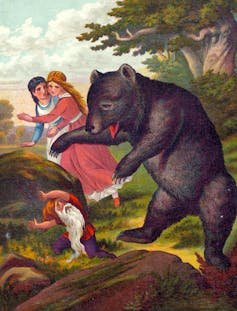
All fairy tales must have a villain. Sam and Elena initially cast the young, stylish State Department biologist Madeline Pettit in that role. Pettit cautions them to stay away from the bear, for their own good as well as the bear’s. They refuse to listen, resenting her for intruding on their life, but more so for drawing attention to the wedge the bear has already driven between them.
Their mother’s ex-boyfriend also fits the villainous stereotype of wicked stepparent. But despite being built up as a source of volatility, violence and domestic discord, he only plays a background role in the story and never develops into a fully realised character.
His memory, rather than his presence, is a source of repression that legitimises the sisters’ determination to escape into a world of fantasy. When they encounter him at a family funeral, Sam actually mutters: “He’s even scarier than the bear” – an echo of recent online hypothetical debates about whether a woman, faced with a strange man and a bear in a forest, would “choose the bear”. Many women, Elena included it would seem, would indeed choose the bear.
Protective hostility
While Bear is Phillips’s second novel, it feels less evenly developed and intricate than her first, which wove together multiple narrative voices. It is written in the third person, much of it assuming the straightforward style of young adult fiction, befitting its protagonist’s worldview. But the novel’s tight focalisation through the unforgiving Sam, who misreads not only the bear but also almost all other characters, renders the first two-thirds of the novel somewhat confining.
The protective hostility Sam projects makes her unlikable, even if the reader can empathise with her hardships, but Phillips risks her protagonist becoming altogether unsympathetic by emphasising Sam’s growing dislike of the novel’s most captivating element: the bear.
What would it be like if Moby-Dick was not narrated by Ishmael, who opens the reader to the mystery and beauty of the natural world beyond the human, but by the vengeful Ahab, who seeks to destroy the whale and all the possibilities it represents?
While Sam is by no means an Ahab, she plots to destroy the bear. The novel wades into murky territory by focusing on her hostility to the creature, whom the reader is given no real cause to hate, rather than Elena’s wondrous view, or even Madeline’s environmentalist one.
While it is difficult to sit with Sam’s misjudgements, her unlikability stems from her desperation to escape her reality by retreating into fairy-tale delusions. In the novel’s tense final pages, Sam and Elena’s dispute reaches its peak in an ultimate encounter with the grizzly. These are the most philosophically profound pages in the book. The ending is a powerful meditation on human nature and the stories and fictions we tell ourselves to endure.
The ultimate villain
Bear is most interesting as a commentary on the enigmas of our relationships under late capitalism. It explores the pressures of family life, hardship, loss, broken dreams and our fragile relationship to nature.
These themes are contextually anchored in the heightened uncertainties and disconnections of the pandemic, which laid bare the pressures of a society where the economy is driven by greed, without any consideration for nature or human thriving. The novel depicts a world where labour has been subdivided into a precarious workforce with limited rights, and where the healthcare and welfare systems neglect the poorest and most vulnerable members of society.
The rhythm of the sisters’ lives depends entirely on their companies’ schedules. Sam cannot take proper time off to grieve or care for her mother without going further into debt. Her mother’s unpaid medical bills threaten to bankrupt the family. The bank wants to repossess their house, robbing Sam of her one imaginary ticket off the island.
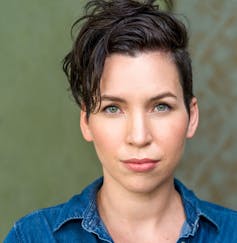
An extraordinary encounter with a wild animal is presented as the ultimate contrast to the banal rhythms of the working-class drudgery that saps all enchantment from the human experience. In a world of coldly rationalised numbers that are detached from the experience of poverty, who wouldn’t choose the bear – or at least the wonder and beauty it signifies – over the monster of capital, which, as Marx famously put it, “vampire like, lives only by sucking living labour”?
That, at least, is Elena’s logic; Sam remains sceptical. The novel’s tragic twist exposes the extent of both sisters’ delusions with a powerful irony. The biologist Madeline is proven correct in a way that shatters any superstitious ideas about the possible cause of the bear’s arrival and what its remarkable appearance might signify. The novel implies a more banal explanation has been available all along: climate change, overfishing, plus the unusual cessation of traffic that accompanied the pandemic lockdowns, disrupted the bear’s regular feeding and migratory patterns.
Bear plays in the slippages between fantasy and the realities that constrain the lives of working-class people. Through the story of a naïve individual lost in her struggle to cope with poverty and a family that is breaking apart, Phillips exposes the external forces that drive people to create irrational fictions about themselves and the world. Although the novel ends in tragedy and devastating losses, the bear is not the story’s villain. Nor is the scientist or the wicked stepfather, or even Elena or Sam and their poor decision-making. The true villain is capitalism, which sows divisions between ordinary people and drives a wedge between humans and nature.
Tamlyn Avery does not work for, consult, own shares in or receive funding from any company or organisation that would benefit from this article, and has disclosed no relevant affiliations beyond their academic appointment.
This article was originally published on The Conversation. Read the original article.







